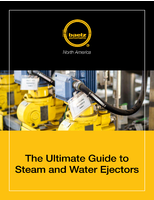NVision Saves Clients Time and Money with Consulting-First Approach

NVision, the leader in non-contact optical scanning, announced that its technology consulting philosophy has been successful in saving time and money for companies in need of 3D scanning.   Â
"Unfortunately, most companies just want to focus on selling their scanning equipment or their scanning service. They don't really take the time to assess the prospect's needs in the long-term and decide on what is truly the best course of action for the customer, time and money-wise," says Steve Kersen, NVision's VP of Sales & Marketing." At NVision, we work by first consulting in-depth with a prospect, learning their needs, then advising them as to whether it is more cost- effective for them to purchase equipment or whether it is better to outsource. We believe this consulting makes NVision unique and has saved customers time and money."
A key part of NVision's consulting service is acquainting prospects with today's current scanning technologies in order to determine what type of scanning best fits their needs and budget. "There are a number of optical measurement systems available today and we try to familiarize our prospects with each one," says Kersen.
Among the scanning technologies and engineering services that NVision provides its customers are:Â
1. HandHeld laser scanning – NVision's HandHeld scanner is a portable, non-contact laser scanning device that can capture an object's 3D coordinates, or data points, rapidly and with a high degree of resolution and accuracy. " One advantage of the HandHeld scanner is its versatility – it's capable of capturing 3D geometry from objects of almost any size or shape, in almost any environment," says Kersen. "Its flexibility, speed, ease of use, and portability make it a suitable choice for nearly every type of reverse engineering application, from consumer goods to full size automobiles."
2. Optical CMM scanning – "Our optical coordinate-measuring machine (CMM) is capable of obtaining extremely accurate scan data, largely because it is equipped with optical encoders," says Kersen. "It is ideal for high-speed production inspection applications."
3. Computed Tomography (CT) scanning – "This is one of the most accurate and versatile scanning technologies that we offer for reverse engineering,"says Kersen. CT scanning utilizes x-rays to produce 3D representations of both internal and external components and is fast, accurate, non-invasive and non-destructive. According to Kersen, its ability to capture internal geometry makes CT scanning a good choice when inspection or measurement requirements exceed the capabilities of laser scanning. This is often the case with objects that contain internal geometry that would be obscured for laser scanners, such as certain medical devices.
4. Long-range scanning – "Also known as "time of flight" scanning, this process is used when large-scale data capture is needed," states Kersen. "For example, when you need the as-built data about structures such as factories, power plants, and oil platforms; construction projects such as road or bridges, or industrial machinery and equipment." Among its other benefits, it allows early detection of interferences and design flaws and can be used to create blueprints and floorplans.
5. CAD Modeling – "After scanning is completed, we usually convert the object's 3D data to an STL file, which is then used to create a 3D IGES/STEP/parasolid model or native solid in the specific CAD format the customer requires," says Kersen. "These formats include SolidWorks, Siemens NX, CATIA, Pro/Engineer (Pro/E), and Inventor. The CAD models can be used to create duplicates of the original part or to analyze and optimize the design."
6. Inspection – "We can use our scanning data to inspect parts to show deviations between the manufactured product and the original 3D design. Or NVision can scan a product and tooling at various stages of the manufacturing process to determine if improvements can be made to the process," says Kersen. Â
If the customer decides that their engineering needs don't warrant the purchase of an in-house scanning system, NVision and the customer then determine whether the parts should be shipped to an NVision facility or if an NVision engineer should travel to the customer's facility. The other important items to be decided are the customer's preferred CAD format or critical dimensions to be included in a comprehensive inspection report.
"I'm happy to say that we've gotten a lot of positive feedback about our consulting," says Kersen. "At NVision, we feel that our technical expertise should be employed not only in making sure that our customers' engineering needs are fully met but also in saving them time and money wherever possible."Â Â Â Â Â Â
For more information, contact NVision, Inc., 440 Wrangler Dr, Suite 200, Coppell, TX 75019. Ph: 972-393-8000, Fax: 972-393-8002. E-mail: sales@nvision3d.com. Visit NVision's Web site at http://www.nvision3d.com/.
About NVision
NVision, Inc. (http://www.nvision3d.com) was established in 1990 with one goal in mind: to provide customers with the highest accuracy non-contact optical measurement systems and services for Reverse Engineering and Inspection. Focusing our expertise on the aerospace, power generation, and oil/gas industries, NVision provides both contract scanning services and systems sales to companies throughout North America. Our elite team of engineers provides customers with an unmatchable level of experience and is able to advise and assist with the most difficult engineering challenges.
NVision's clients include industry leaders such as Alstom, Boeing, GE, Lockheed, Lear, NASA, Porsche, Raytheon, Siemens, Toyota, and every branch of the U.S. military.




